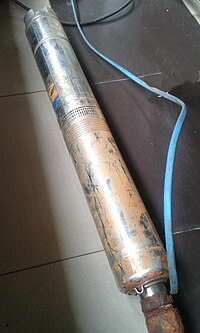
Photo from wikipedia
Electrostatic separators are not commonly used for the selective sorting of different sorts of metals contained in a granular mixture. However, the separation might be possible if their characteristics (density,… Click to show full abstract
Electrostatic separators are not commonly used for the selective sorting of different sorts of metals contained in a granular mixture. However, the separation might be possible if their characteristics (density, conductivity, size, etc.) are different enough. The aim of this paper is to evaluate the feasibility of sorting tinned and bare copper strands (length: 2–5 mm; diameter: 0.8–1.6 mm) contained in granular electric cable wastes using a roll-type electrostatic separator with three different high-voltage electrode configurations: plate; S-shaped; and reverse S-shaped. Experimental design methodology is used to investigate the effects of three factors: 1) high voltage applied to the electrode; 2) system, inclination of the high-voltage electrode; and 3) interelectrode distance. The recovery and purity of the bare copper product are evaluated for each experiment. The best results of the electrostatic separation experiments are obtained with the reversed S-shaped electrode configuration (recovery of 55.4% of the bare copper wire in a product having a copper content of 85.1%). Numerical modeling and experimental visualization of particle trajectories facilitate the interpretation of the electrostatic separation experimental results.
Journal Title: IEEE Transactions on Industry Applications
Year Published: 2017
Link to full text (if available)
Share on Social Media: Sign Up to like & get
recommendations!